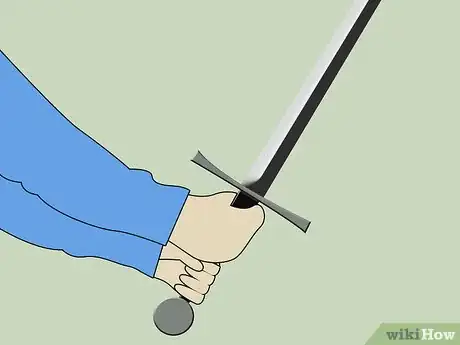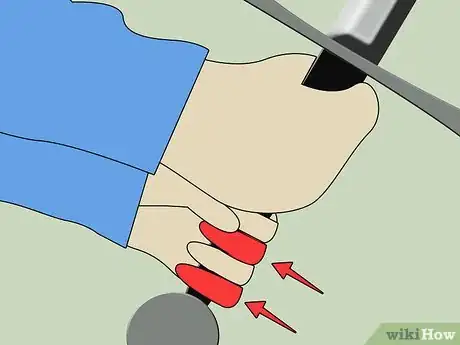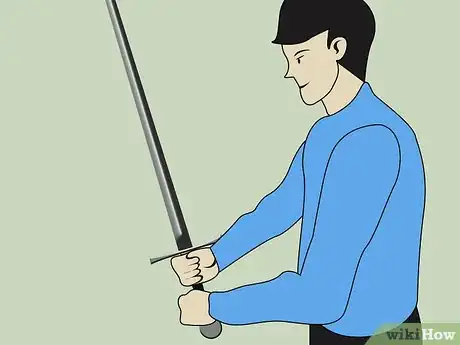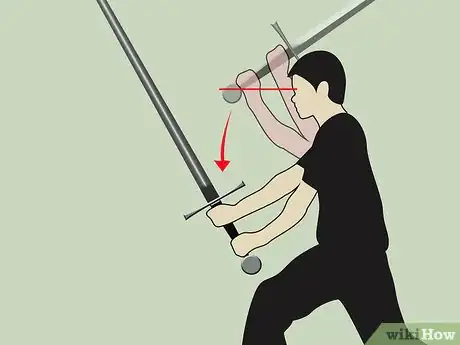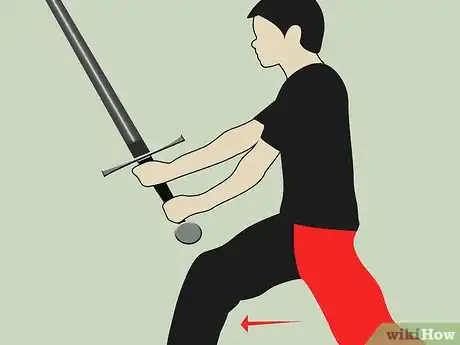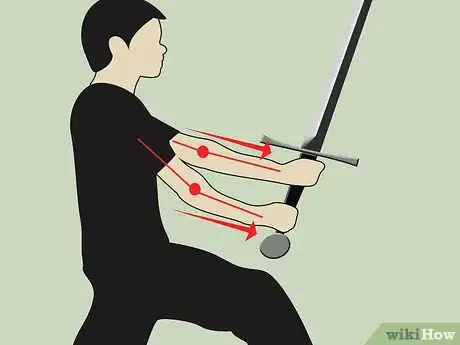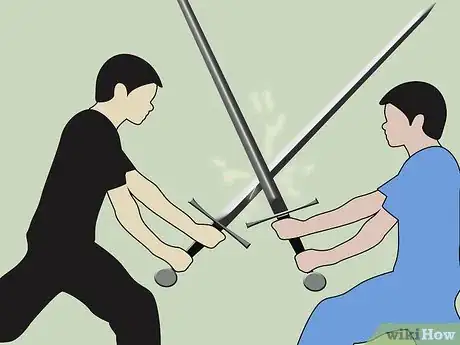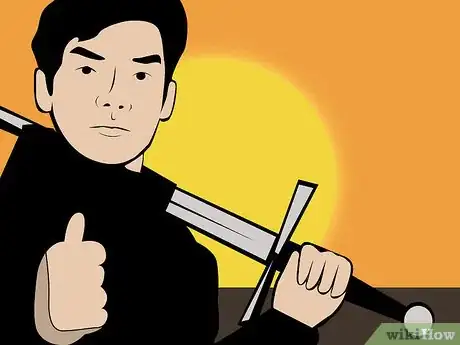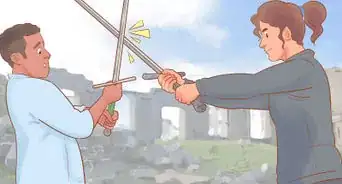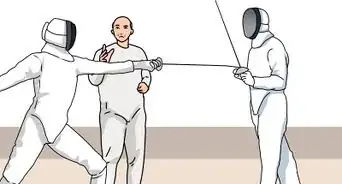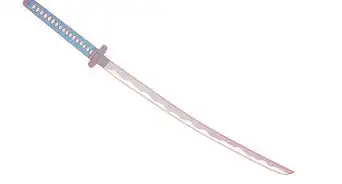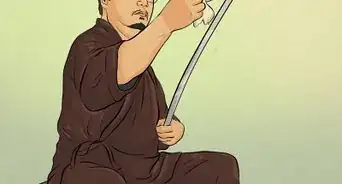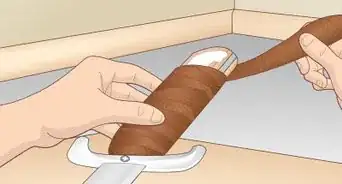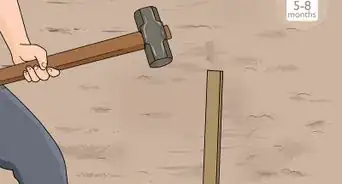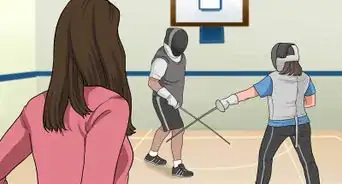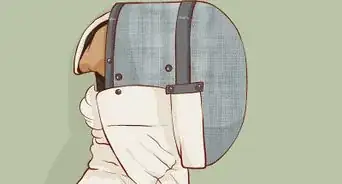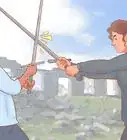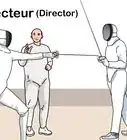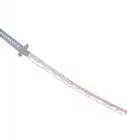wikiHow is a “wiki,” similar to Wikipedia, which means that many of our articles are co-written by multiple authors. To create this article, 29 people, some anonymous, worked to edit and improve it over time.
This article has been viewed 143,513 times.
Learn more...
Long back, swords were vital tools of survival, and today that knowledge can still be used. Consider this, one day you are walking through a park when someone tries mugging you with a baseball bat, or you are otherwise attacked by armed opponents. Unless you are a 4th degree blackbelt, you won't win this. But suppose there is a fallen branch by you, or a pipe lying in the alleyway. Perhaps this would happen on your way back from baseball practice, and you just happen to have a bat of your own. This guide may very well save your life. Stick with Boffer swords (pvc pipe covered in soft foam), plastic swords or wooden swords when training training with a friend. When training under a master use live steel; it has a more realistic feel.
Steps
-
1Grip your sword with your dominant hand (in this article it will be referred to as the right hand and the non-dominant as the left henceforth). Switch this if you are left-handed) right below the guard and grab the pommel(bottom of the sword) with your left hand. If the pommel is very uncomfortable to grip, stick with the basic two hand grip.[1]
-
2With the left hand, grip the sword tightly with the pinky, ring, and middle finger, the others should have a semi-tight grip. The right hand is not used for striking![2]Advertisement
-
3Hold your sword so that the pommel is right above your bellybutton (don't rest it on the stomach, keep it a little ways out) and point the tip somewhere between the sternum and throat. Now if they charge full on they'll run into your weapon.[3]
-
4When striking, stab at the sky, bringing your left hand up past your eye, then come down on them, using your right hand to guide the blade and using the left hand to set the force in to the blade. The right hand should be the axis or pivot.
-
5Now the footwork. Place your left foot behind your right foot (other way around if you're left handed) and stand on the balls of your left foot. Keep your balance!
-
6When you strike, you push with your left foot, sliding your right foot on the ground and raise your sword. Now bring your left foot back into position and STRIKE![4]
-
7When striking, keep your right arm straight (but not locked, you don't want it broken) and bend it when it reaches your head. Reverse what you just did to strike, but remember, your strike with the hand closest to the pommel, you use your dominant hand to guide.[5]
-
8Practice your strikes. Don't weakly hit them, keep each and every swing full and powerful. Keep your battle cry strong (otherwise known as your kiai[kee-eye]) so your hit stays strong. After you are good at individual strikes, try them in a string, hit the gloves, then immediately advance to hit the head!
-
9Don't get set in your ways too much. If you go to get taught by a true swordsman, you will have to throw away all you thought you knew about armed combat and take every bit of knowledge from the trainer.
-
10And finally, DON'T GIVE UP! If you want to be any sort of blades man you will have to practice daily. If you become rusty, you'll fall behind.
Community Q&A
-
QuestionHow long will it take for me to master the art and use of real swords?
 Yonaton ChanowitzCommunity AnswerTo master it can take a lifetime. Using real swords only requires you to buy the necessary protective equipment and blunt steel sword, and join a HEMA group.
Yonaton ChanowitzCommunity AnswerTo master it can take a lifetime. Using real swords only requires you to buy the necessary protective equipment and blunt steel sword, and join a HEMA group. -
QuestionIs there an option to carry my two handed sword on my back? Or is it to long to draw from my back?
 JlegobotCommunity AnswerIt depends on the sword, and your body type. If you have longer arms, and a shorter two-handed sword, then it is very possible.
JlegobotCommunity AnswerIt depends on the sword, and your body type. If you have longer arms, and a shorter two-handed sword, then it is very possible. -
QuestionDoes this also work with single-handed swords, or is there a different technique?
 Community AnswerSingle-handed swordsmanship is a different beast. There are some similarities, but twice as many differences. Footwork is much more a key element here as well.
Community AnswerSingle-handed swordsmanship is a different beast. There are some similarities, but twice as many differences. Footwork is much more a key element here as well.
